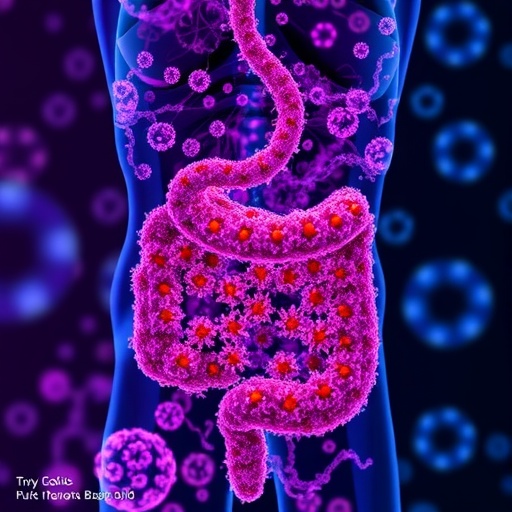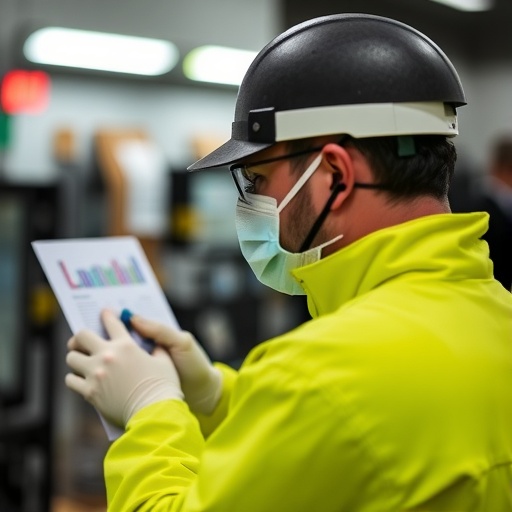For use as an at-home IoT biosensor
![]()
Credit: COPYRIGHT (C) TOYOHASHI UNIVERSITY OF TECHNOLOGY. ALL RIGHTS RESERVED.
Overview:
Associate Professor Kazuhiro Takahashi and Assistant Professor Yong-Joon Choi of the Department of Electrical and Electronic Information Engineering at Toyohashi University of Technology have developed a chip that can sense antigens at one part per quadrillion molar mass. The chip was created using semiconductor micromachining technology. Antigens derived from diseases and present in blood and saliva were adhered onto the surface of a flexibly deformable nanosheet. The amount of force generated during the interaction between adhered antigens was then converted into nanosheet deformation information in order to successfully detect specific antigens. Created with semiconductor technology machined at the millimeter scale, this sensor chip is expected to contribute to telemedicine by functioning as an IoT biosensor that allows antigen and antibody tests to be carried out from home.
Details:
The measuring device simply and quickly detects diseases using a minuscule amount of blood, urine, saliva, or other bodily fluid, and will be a vital tool for accurately diagnosing diseases, verifying treatment results, and checking for recurrences and metastasis. Research is being conducted into a biosensor that can measure treatment results and pathological reactions by detecting DNA, RNA and proteins contained in such fluid. This technology has recently attracted interest across the globe, with antigen and antibody detection widely used to detect and determine the presence of novel coronavirus infections. Furthermore, among COVID-19 patients, reports suggest that patients with severe symptoms show differences in multiple protein concentrations contained in the blood when compared to those with mild symptoms. By examining such markers, this technology is expected to be used to predict illness severity. Current detection devices are not digitalized, and require visual confirmation of color changes using a labeling agent. Reading the wide range of markers is time consuming, and has made implementation for IoT devices difficult.
The research team is developing a micro sensor chip that checks for diseases using a flexibly deformable nanosheet made using semiconductor micromachining technology. First, an antibody that catches the targeted antigens is fixed onto the nanosheet, and deformations to a thin film caused by electric repulsions among the adhered antigens is measured. To improve sensitivity to the point where the membrane that the antigens adhere to becomes thin and soft, organic nanosheets two-times softer than semiconductor silicon are used. This is expected to improve sensor sensitivity to a magnitude twice that of conventional silicon-based sensors. In addition, development is continuing on signal detection technology that uses a smartphone camera to detect nanosheet deformation.
With this sensor, which is designed for sensitive changes in adhesion of biomolecules, the antibody must be fixed to the nanosheet in advance in order to capture the antigen, and issues related to film degradation can make this process difficult. The research team optimized density for antibodies to adhere to a nano membrane with adjustable thickness, creating a biosensor that detects only antigens with specifically high sensitivity. Moreover, since it is possible to detect deformation to the nano sheet caused by adhered molecules in real time, the technology is expected to allow for quick detection of disease-derived molecules. The biosensor developed in this project was used in an experiment to detect albumin, a protein contained in blood. The experiment successfully detected one femtogram (15 attomoles in molar concentration) of antigen contained in one milliliter. With the minimum detection limit almost equivalent to that of large-scale detection devices that use labeling agents, this device is expected to allow for ultra-sensitive detection on a portable scale.
Future Outlook:
Going forward, the research team plans to conduct trials using semiconductor sensors to detect markers for severe symptoms of COVID-19 infection. In addition to blood detection, chemical sensors are being developed to detect odor and chemical substances. We believe we can contribute to an IoT-based society by making new, small-scale sensor devices a reality. Replacing the probe molecule on the surface of our nanosheet, the technology can be used to detect viruses while also detecting a variety of biomarkers. By making these biosensors common in society, we aim to contribute to telemedicine, allowing doctor diagnoses to be performed from home.
###
Reference:
Yong-Joon Choi, Toshiaki Takahashi, Miki Taki, Kazuaki Sawada, and Kazuhiro Takahashi, Label-free attomolar protein detection using a MEMS optical interferometric surface-stress immunosensor with a freestanding PMMA/parylene-C nanosheet, Biosensors and Bioelectronics, DOI: 10.1016/j.bios.2020.112778
This research was conducted with grants from the Ministry of Education, Culture, Sports, Science and Technology (MEXT) Scientific Research Fund (Basic Research (B)), the Japan Science and Technology Agency (JST) PRESTO Creation of Innovative Nanoelectronics Combining Materials, Devices, and Systems, and a Future Challenge 2050 grant from the New Energy and Industrial Technology Development Organization (NEDO).
Media Contact
Yuko Ito
[email protected]
Related Journal Article
http://dx.




